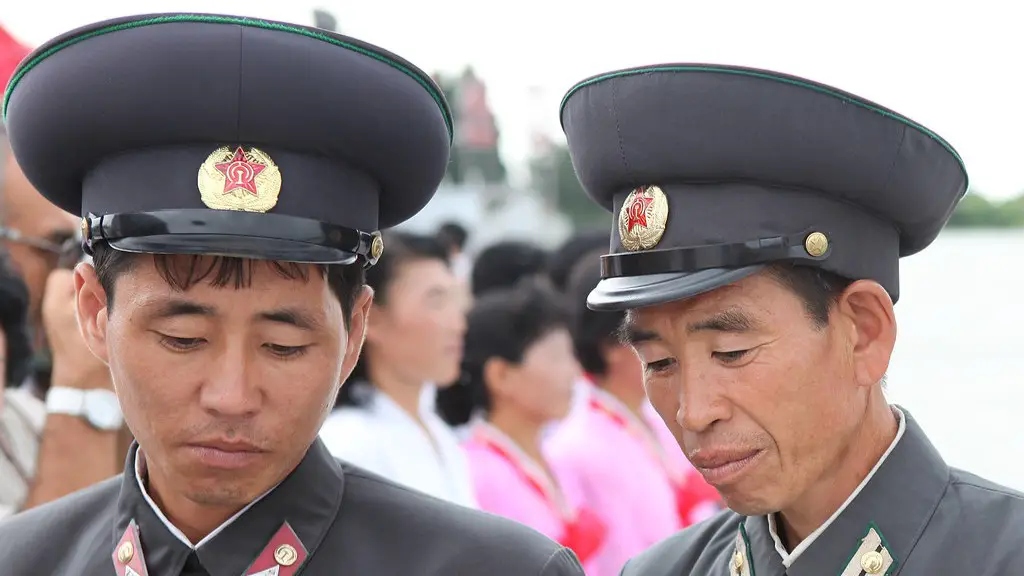Since North Korea gained nuclear weapons capability, the Hermit Kingdom has posed a threat beyond its immediate region, to the United States in particular. Questions were raised over whether North Korea had the capability to launch ballistic missiles that could reach the US mainland. South Korean Defence Minister Song Young-moo has said that North Korea could reach the US states of Washington, Oregon and even California with intercontinental ballistic missiles.
If North Korea does launch missiles at the US, the Pentagon and US Pacific Command could have to make a difficult decision as to whether to intercept the missiles using US missile defence systems, such as the THAAD and Aegis Ashore defence systems, which have been deployed in South Korea and Japan.
To avoid the potential nuclear holocaust, there has been an attempt to broker peace between the US and North Korea. The Trump administration has expressed interest in engaging in direct talks with North Korea but, as of yet, no agreement has been made. If an agreement were to be made, part of it could be that North Korea discontinue its long-range missile tests in exchange for a relaxation of economic sanctions by the US, South Korea and Japan.
The North Korean threat isn’t only restricted to missile strikes. Cyberwarfarrell [sic] is an ever-growing threat, with North Korea having already been linked to several high-profile cyber attacks, such as the WannaCry ransomware attack, and the Sony Pictures hack.
The risk of unconventional attacks from North Korea against the US, such as cyber-attacks, is a credible one, as has been demonstrated by the aforementioned attacks, and with North Korea’s vast cyber capabilities, could be used to devastating effect.
THAAD and Aegis Ashore
The deployment of the THAAD (Terminal High Altitude Area Defense) and Aegis Ashore defence systems in South Korea and Japan was undertaken in response to the growing threat from North Korea. THAAD and Aegis Ashore are sophisticated missile defence systems designed to protect against incoming ballistic missiles.
The THAAD system is a US-made system with X-band radar and interceptor missiles. The system is designed to intercept and destroy incoming ballistic missiles at a range of up to 200km and at a maximum altitude of 40km. The Aegis Ashore system is a similarly advanced system with similar capabilities.
The Aegis Ashore system is currently being deployed at the new US naval base in Guam, a US territory and site of continual US-North Korea tensions, as well as in Japan, another nearby US regional ally. However, the deployment of these systems has caused controversy, with China arguing that they are a threat to regional stability and a violation of Chinese sovereignty.
China has sought to counter the deployment of these systems by reinforcing its own military capabilities in response. This has resulted in heightened regional tensions and has increased the risk of a potential military conflict between China and the US and its regional allies.
Cyberwarfare
North Korea is one of the most active countries in cyberspace, regularly conducting cyber-attacks against its enemies, as well as against its own citizens. Cyber warfare has become increasingly important for North Korea, as it provides a relatively cheap and low risk way for them to target their enemies.
North Korea has been linked to several high-profile cyber-attacks in recent years, such as the WannaCry ransomware attack, which targeted hospitals and other institutions around the world, and the Sony Pictures hack, which exposed sensitive data to the public. North Korea has also been known to carry out a number of smaller scale cyber-attacks against US government agencies and private companies, such as the 2014 attack against Sony Pictures that caused a major data breach.
North Korea also poses a threat to the US through the use of malicious software. In 2016, the US National Security Agency (NSA) discovered a malicious attack by North Korea, known as Hidden Cobra, that used an advanced version of a cyber weapon called Havex to target industrial control systems in the US. Such a weapon could be used to target the US power grid or other critical infrastructure, leading to serious economic and social repercussions.
The US has been building its cyber capabilities in response to the threat from North Korea, but with the constantly evolving nature of cyber-attacks, the US will have to maintain a vigilant stance to defend itself against the growing capabilities of its enemies.
Negotiation
The political engagement between the US and North Korea has so far failed to difuse the nuclear tensions on the Korean peninsular. Negotiations have been attempted between the two sides, primarily mediated through the US, South Korea and China. However, these talks have made little progress in alleviating the security concerns of either party.
The North Korean government has made seemingly contradictory claims, stating an intention to denuclearize the Korean peninsular, while at the same time continuing with its nuclear programme and missile tests. This decision has been a source of contention in the region, and between North Korea and the US, with the latter having imposed several rounds of economic sanctions.
The Trump administration has expressed an interest in engaging in talks with North Korea, but there is little evidence this will be successful. Without a concerted effort from all parties involved, the security situation on the Korean peninsular is unlikely to improve, and the risk of miscalculation by either side remains high.
International Cooperation
In an effort to maintain international stability, and to prevent military conflict between the US and North Korea, there has been increased international cooperation between the US, South Korea, Japan and China. These nations have sought to develop external strategies for dealing with the North Korea issue, and have been attempting to broker a diplomatic solution between the parties.
The regional powers, along with the US, have been working together to impose sanctions on North Korea, in an effort to pressure the regime into changing its behaviour. However, the sanctions have so far been ineffective in curbing North Korea’s nuclear ambitions, and the UN Security Council has been unable to agree on further measures to pressure North Korea.
Despite the efforts of the UN, and increased international cooperation, the stalemate between US and North Korea still persists. Governments around the world will have to work together in order to prevent a conflict, which would have devastating consequences for the region and the world.
Humanitarian Aid
The international response to the North Korean crisis has so far been largely focused on military and geopolitical issues, such as sanctions and the deployment of missile defences. However, North Korea’s situation is not just a security threat, but also a humanitarian one.
The humanitarian crisis in North Korea is exacerbated by the punitive economic sanctions imposed by the UN Security Council, which have further reduced the already limited access to food and medical aid. According to the UN, this has had a detrimental effect on the health and well-being of millions of North Koreans, and the UN has called for an end to the sanctions and for the international community to provide humanitarian aid.
The human toll of the North Korean situation cannot be neglected, and with increased international cooperation and support, it is possible to alleviate the humanitarian crisis in North Korea and to improve the lives of millions of its citizens.
US-South Korean Relations
The US-South Korean relationship has historically been strong, and remains so today. The US and South Korea have been military allies since the 1950s, and the current US administration regards South Korea as its most important ally in the Asian region.
In April 2018 the two countries held their first joint military exercises in 10 years, with the aim of deterring North Korean aggression. The exercises were held in South Korea and involved 10,000 US troops in a show of force that was intended to send a message to North Korea. South Korea has also plans to open up a dialogue with North Korea, with the hopes that a diplomatic solution can be reached.
The US and South Korea have been working in close cooperation to address the security situation on the Korean peninsular, and although tensions remain high, the political relationship between the two countries remains strong.
Conclusion
The growing conflict between the US and North Korea has escalated over the last few years, and the US has increased its military presence in the region as a result. North Korea poses a serious security threat to both the region and to the US mainland, and the US and its regional allies are attempting to deter North Korea from further aggression.
While military might and sanctions remain the primary tool for addressing this threat, there is also a need to consider the humanitarian cost of the North Korea crisis and to provide aid to the North Korean people. The US and South Korea have been working together to address this threat, and increased international cooperation is needed in order to ensure peace and stability in the region.





